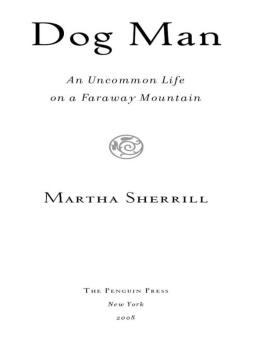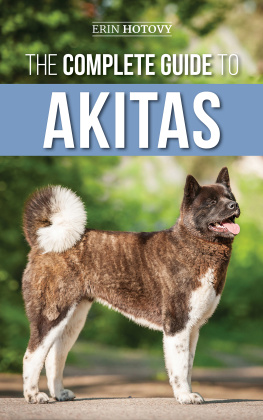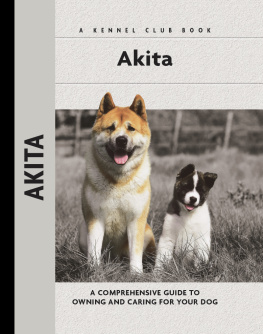Dog Man
An Uncommon Life
on a Faraway Mountain
M ARTHA S HERRILL
T HE P ENGUIN P RESS
New York
2008
THE PENGUIN PRESS
Published by the Penguin Group
Penguin Group (USA) Inc., 375 Hudson Street, New York, New York 10014, U.S.A. Penguin Group (Canada), 90 Eglinton Avenue East, Suite 700, Toronto, Ontario, Canada M4P 2Y3 (a division of Pearson Penguin Canada Inc.) Penguin Books Ltd, 80 Strand, London WC2R 0RL, England Penguin Ireland, 25 St. Stephens Green, Dublin 2, Ireland (a division of Penguin Books Ltd) Penguin Books Australia Ltd, 250 Camberwell Road, Camberwell, Victoria 3124, Australia (a division of Pearson Australia Group Pty Ltd) Penguin Books India Pvt Ltd, 11 Community Center, Panchsheel Park, New Delhi110 017, India Penguin Group (NZ), 67 Apollo Drive, Rosedale, North Shore 0632, New Zealand (a division of Pearson New Zealand Ltd) Penguin Books (South Africa) (Pty) Ltd, 24 Sturdee Avenue, Rosebank, Johannesburg 2196, South Africa
Penguin Books Ltd, Registered Offices:
80 Strand, London WC2R 0RL, England
First published in 2008 by The Penguin Press, a member of Penguin Group (USA) Inc.
Copyright Martha Sherrill, 2008
All rights reserved
Photograph credits
Introduction: Courtesy of Perkins School for the Blind
Chapter One: Mitsuro Aoyagi
Chapter One and Chapter Nine: Courtesy of the author
Chapter Three: Aiken-no-Tomo Dog Magazine
All other photographs courtesy of the Sawataishi family.
LIBRARY OF CONGRESS CATALOGING IN PUBLICATION DATA
Sherrill, Martha.
Dog man: an uncommon life on a faraway mountain /Martha Sherrill.
p. cm.
ISBN: 978-1-1012-1770-2
1. Akita dogJapan. 2. Sawataishi, Morie. 3. Human-animal relationshipsJapan.
I. Title
SF429.A65S55 2008 2007035113
636.73dc22
[B]
Map illustration by Meighan Cavanaugh
Without limiting the rights under copyright reserved above, no part of this publication may be reproduced, stored in or introduced into a retrieval system, or transmitted, in any form or by any means (electronic, mechanical, photocopying, recording or otherwise), without the prior written permission of both the copyright owner and the above publisher of this book.
The scanning, uploading, and distribution of this book via the Internet or via any other means without the permission of the publisher is illegal and punishable by law. Please purchase only authorized electronic editions and do not participate in or encourage electronic piracy of copyrightable materials. Your support of the authors rights is appreciated.
For Kitako
And in memory of Bernard L. Knapp,
who loved Japan too
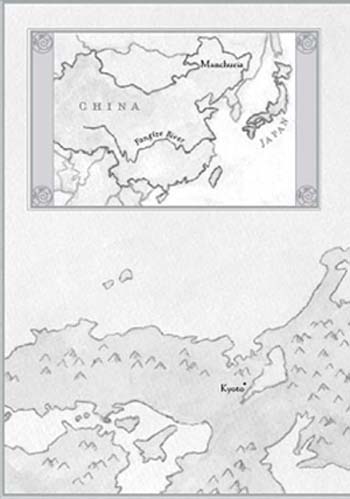
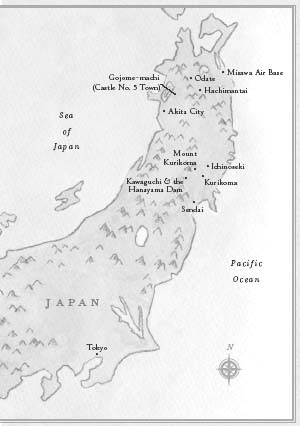
This rare old tree is what we came to see.
G ARY S NYDER, No Nature
Dog Man
Introduction
T here are mountain villages and green valleys throughout Japan, and very few people live in them. The cities teem and buzz with lifeeach year with increasing speed and sophistication, more crowds and smaller cell phones and a dizzying parade of manmade pleasures. But far away, the snow country world moves quietly, almost forgotten except as a dream. This is the story of that dream. Its about one mans devotion to a place and way of being, however preposterous it may seem to others, and how he gently, and not so gently, steers his life there.
Dogs were part of the dreamand came along. Every morning and evening Morie ( Mor-ee-ay ) walked with them into the dark woods and snowy mountains. Together, they traveled into a deeper place, the world of instinct and survival, investigating the subtleties of mountain life as well as its thrills and dangers. In the mountains, they encountered growling beasts and dead carcasses, poisonous mushrooms, flying pheasants and lost hikers. They fought off bugs and snakes and bears, and always came home, always, even if theyd gotten very lost themselves. Morie and his dogs were heroes every morning, and heroes again every night. With each walk into the wild, they were bold and resourceful. They were alive and alert, their senses acute, poised for the natural excitements that the rest of us must crave when we turn to flickering screens for adventures and when we ache to connect with nature and animals. We yearn for the company of dogs because they return us to an ancient way of life, vanishing now. It is the power of the natural world to reacquaint us with our quieter selves, the part now buried alive in the noise and glare of modern life and the new habit of nonstop connection with others.
If Morie lived in Alabama, he would have gone into the swamps with a coonhound. If he lived in Russia or Norway, hed have crossed the tundra with a Karelian bear dog or a laika. Since he spent most of his life in the snow country of Japan, he roamed the rice fields and mountains with a traditional snow country dog, an ancient dog type or breed thats gone by different names over the centuries but has been called the Akita since 1927. Canine geneticists suspect the dogs came to the main island of Japan with the first tribes of migratory hunters two thousand years ago. They survived as companions to Ainu hunters, or matagi, who traveled the primeval forests and volcanic ranges in search of large game like bear and deer. After centuries of migrating, as people settled into the towns and small ports in the north, the dogs settled with themand became primarily fighting dogs. They competed in village dog rings and other more casual gambling venues. Feudal lords collected them as living trophies and for several hundred years, from the sixteenth to the nineteenth century, the warrior class, the samurai, were inspired by the dogs courage and rugged fighting spirit. For a particular type of samurai infantryman in training, an Akita dog was his teacher.
It never really mattered what the dogs looked like. Their essence or spirit was the quality most sought afterand valued. A good dog was quiet and fearless, could approach a cornered bear and prompt it to chase, and was virtually weatherproof. In recent times theres been a rather heated debate about what an Akita should look like, but from centuries ago, and still today, they share certain traits: a tightly curled tail, erect or prick ears, long and heavy legs. They resemble in many ways the dogs from the North all over the globedogs from cold climates and snowy Arctic regions, working dogs that have been used for centuries to pull sleds or hunt big game. They have hearty appetites, eating as much as eight or nine pounds of food a day, great stamina, sharp hunting instincts, and a thick double coat of fur thats heavy enough to allow them to burrow deep in the snow and sleep there. During a blizzard, flakes of wet snow stick to their coat and cover it completely, insulation that keeps them even warmer.
From a certain perspective, they can seem out of sync with modern times. The Akita is a noble dog, graceful and quiet, as well as an ancient dogrecent genetic studies have shown it to be one of a handful of the most primitive breeds, linked closely to the wolfbut some of its traits can make it a little rough for polite company. Vestigial instincts lead it to confrontation and overprotection. Until just ninety years ago, the small towns and villages in the snow country competed against each other in the dog ring, which explains why Akitas today can display aggressiveness toward other dogs and small animals, usually less dominant ones. In its milder expression, an Akitas overprotectiveness can resemble devotion or emotional attachment. It can look like love. Unlike some of the other ancient breeds, an Akita forms an unusually strong bond with its owner. They are famously loyal to the human families or the packs to which they belong.

